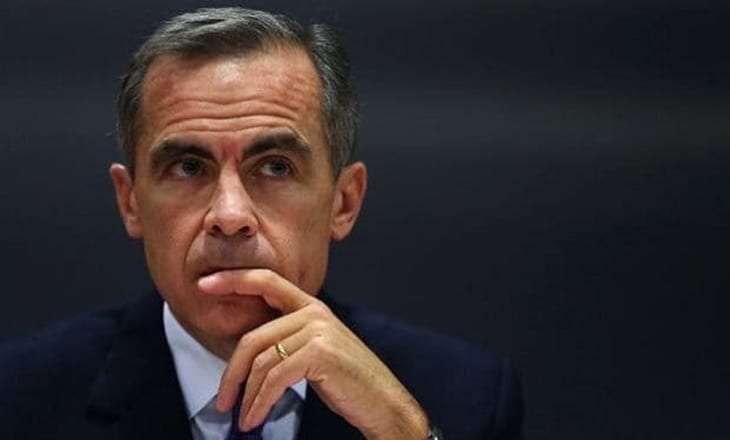The following article was written by Ipek Ozkardeskaya, Senior Market Analyst at FCA regulated broker London Capital Group Holdings plc (LON:LCG).

Ipek Ozkardeskaya, LCG
The Bank of England’s (BoE) Financial Stability Report revealed that Governor Mark Carney is moving toward macro-prudential measures to temper the UK’s rising inflationary pressures within the ‘Brexit reality’.
Mark Carney can no longer keep his eyes closed to the rising inflation in the UK, after the headline inflation advanced to 2.9% in May. Yet, he is not willing to raise the interest rates as the country is face to a decent number of political and economic uncertainties as it prepares to leave the European Union.
Until now, Mark Carney relied on the fact that the slower wages growth would gradually temper the rising inflationary pressures. But apparently, the UK’s households had deeper pockets than Carney estimated and the upside pressure in consumer prices remained solid a year after the Brexit referendum. The UK’s headline inflation is now a stone’s throw lower than the 3% level, above which Governor Mark Carney is asked to write an open letter to the Chancellor to explain the significant deviation from the BoE’s 2% inflation target.
Given the extraordinary Brexit situation, Mark Carney has of course a very good reason to back up the above-trend inflation in the UK. However, he is gradually losing the support of the other MPC members. Three MPC members out of eight voted in favour of an interest rate hike in the BoE’s June policy meeting. The hawkish shift at the heart of the BoE rang the alarm bell.
As a result, Mark Carney has run out of time in letting the macro-dynamics to rebalance the inflation situation in the country.
Today, he has recourse to the macro-prudential measures, a set of rules that will apply to specific areas in the economy, in an attempt to keep his policy loose within the space he has been given in terms of inflation.
Macro-prudential measures
Macro-prudential regulation is defined as ‘the approach to financial regulation that aims to mitigate risk to the financial system as a whole (or “systemic risk”).’ In other words, the macro-prudential measures are used to target specific areas or sectors of the economy that threaten the efficiency of a policy.
Such measures have been frequently employed during the zero rate environment that followed the 2007/2008 subprime crisis. Low mortgage rates encouraged households to purchases properties, which caused a rapid inflation in house prices. To prevent the overheating in the property markets, policymakers often modified the existing rules. In Switzerland, the size of the down payment has been doubled to temper the bubble-like rise in housing prices.
In the UK, the BoE decided to increase the capital requirement from the UK banks and take control over the credit growth.
In theory, these measures are expected to decrease the velocity of the money in circulation and temper the rising inflationary pressures.
The impact on the pound
The macro-prudential measures are designed to diminish the amount of transactions and should lead to tighter monetary conditions in sectors which are thought to overreact to low rates. This is supportive of a stronger pound.
As such, the pound traders’ first reaction to the macro-prudential measures have been positive. The pound cleared 1.2825-offers, which stand for the 23.6% retracement on March – May rise and June triple top.
Pound appreciation past the 1.30 level against the US dollar could curb the rising inflation in the UK and release the tension among the BoE-hawks. This would mean that the pound could consolidate gains above $1.30.
The upside potential is contingent on the Federal Reserve’s (Fed) monetary outlook. The next Fed rate hike is not anticipated before December. Hence, the post-reflation correction in the US dollar could well pave the way for a further rise in Cable.
The key technical resistance stands at 1.3045, the major 38.2% retracement on post-Brexit sell-off. This level should distinguish between a continuation of the mid-term downtrend and a mid-term bullish reversal against the greenback.
